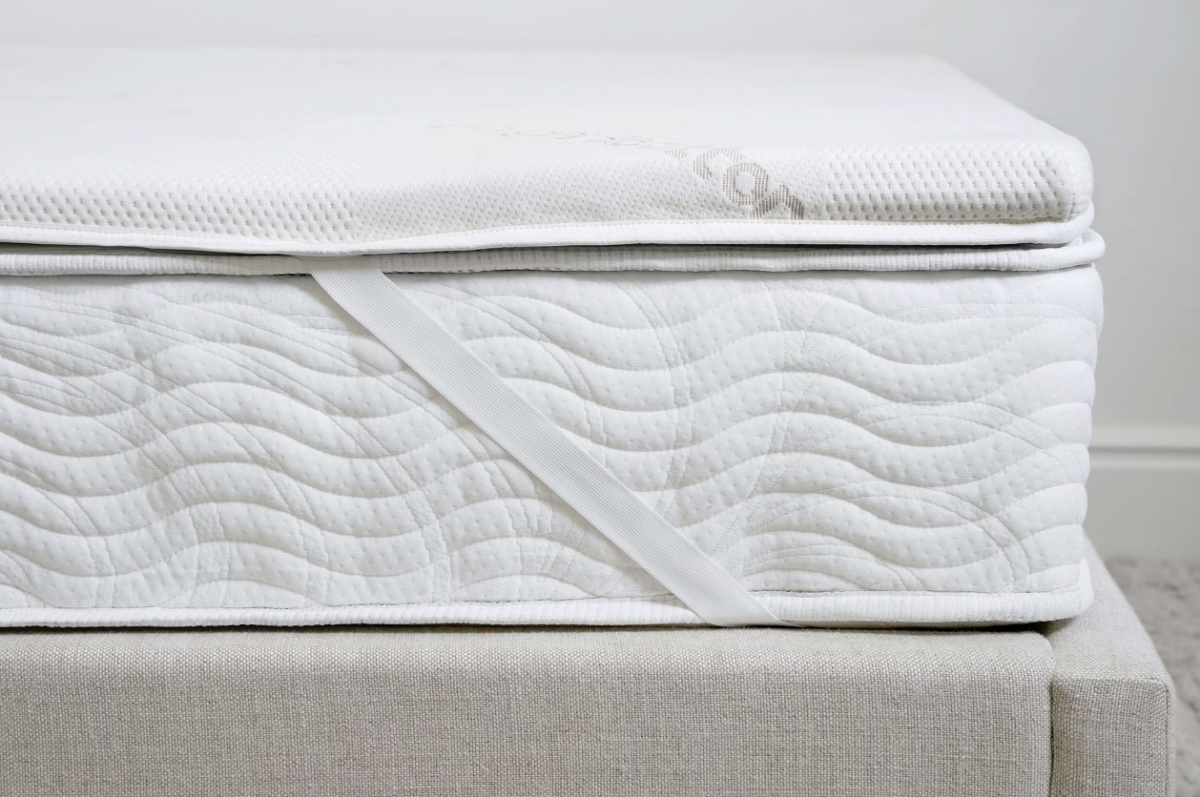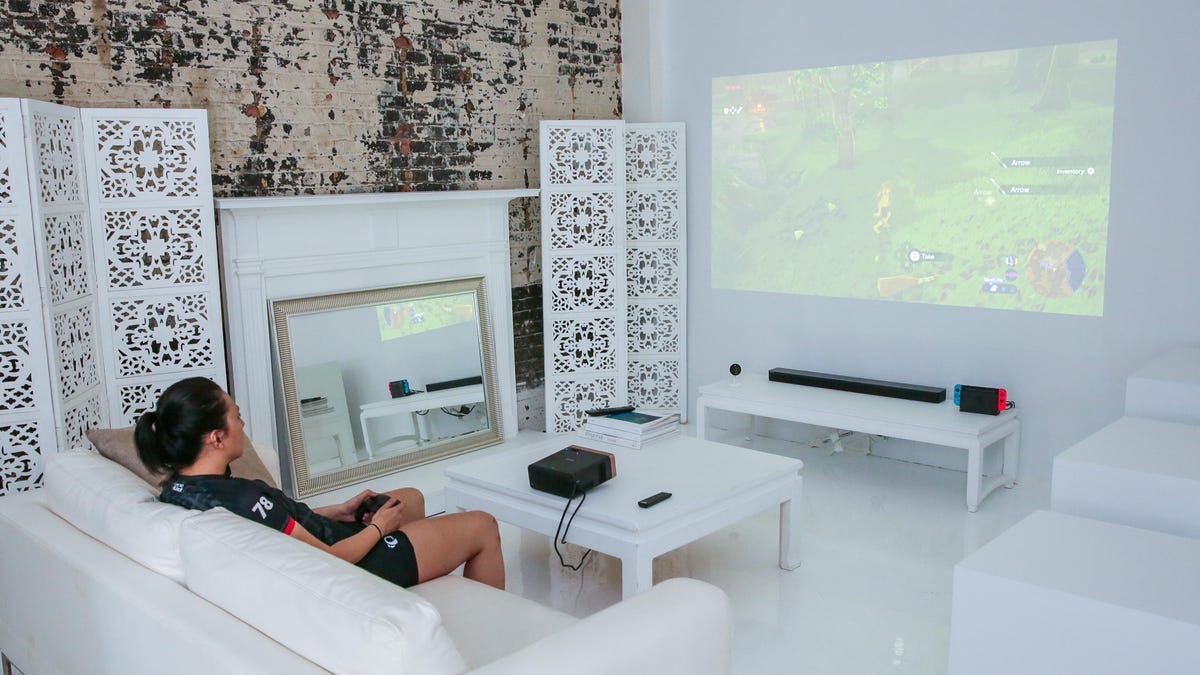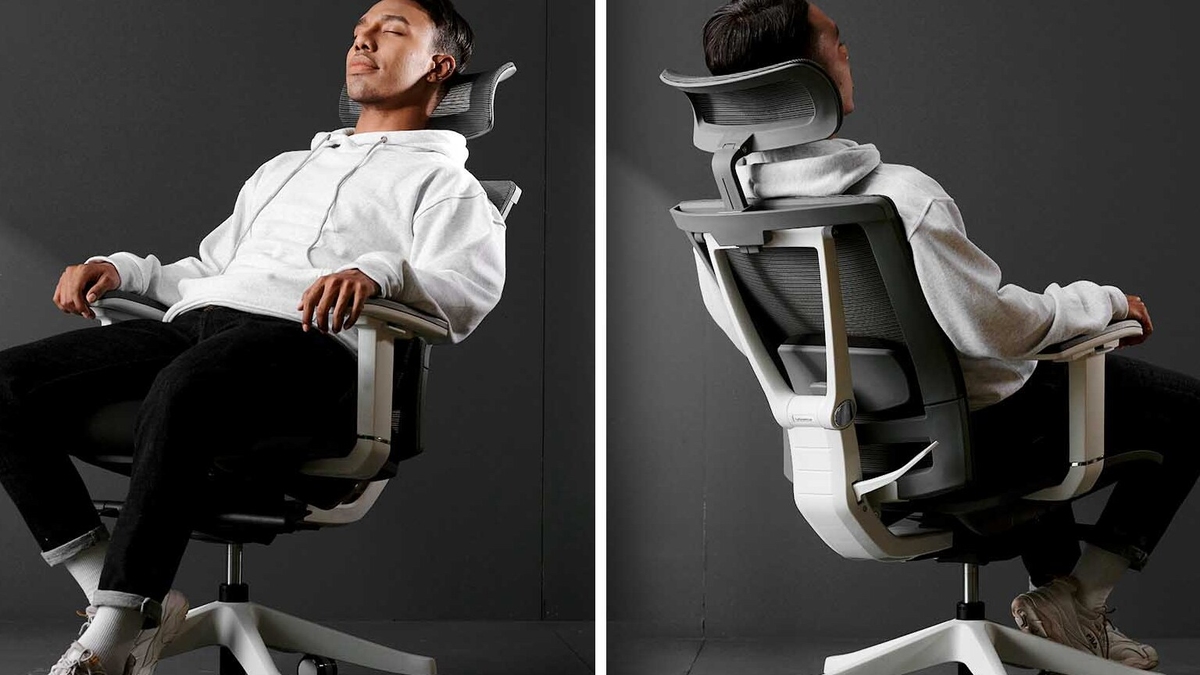

Articles
Where To Place Pillows For Back Pain
Modified: January 18, 2024
Learn effective pillow placement techniques to alleviate back pain in this informative article. Discover the best positions and find relief now.
(Many of the links in this article redirect to a specific reviewed product. Your purchase of these products through affiliate links helps to generate commission for Storables.com, at no extra cost. Learn more)
Introduction
Back pain is a common issue that affects millions of people around the world. Whether it’s caused by muscle strain, poor posture, or underlying medical conditions, back pain can significantly impact daily life and hinder productivity. Finding ways to alleviate back pain is important for improving overall well-being.
One effective approach to managing back pain is through proper pillow placement. The way you position your pillows can make a significant difference in alleviating discomfort and promoting spinal alignment during sleep. In this article, we will explore the importance of pillow placement for back pain and provide guidance on how to position pillows for different types of back pain.
Key Takeaways:
- Proper pillow placement is crucial for managing back pain, providing support, and promoting spinal alignment during sleep. Tailoring pillow arrangements to specific back pain conditions and sleeping positions can alleviate discomfort and improve overall well-being.
- Understanding the type of back pain and implementing appropriate pillow placement strategies can relieve pressure on affected areas, reduce muscle tension, and improve sleep quality. Pillow placement is a personalized and essential component of managing and alleviating back pain.
Read more: What Is A Good Mattress For Back Pain
Understanding Back Pain
Before we delve into the intricacies of pillow placement, it’s essential to understand the various types of back pain. Back pain can be classified into different categories, including lower back pain, upper back pain, sciatic nerve pain, postural back pain, scoliosis, and herniated discs. Each type of back pain requires a specific approach when it comes to pillow placement.
Importance of Pillow Placement
Pillow placement plays a vital role in supporting the natural curvature of the spine during sleep. The right pillow support can help relieve pressure on the back, reduce muscle tension, and promote better alignment. On the other hand, improper pillow placement can exacerbate back pain and lead to discomfort and stiffness.
It’s important to note that pillow placement is not a one-size-fits-all solution. Each individual may require different pillow arrangements based on their specific back pain condition, sleeping position, and personal preferences. Consulting with a healthcare professional or a sleep specialist can provide additional guidance tailored to your unique needs.
Key Takeaways:
- Proper pillow placement is crucial for managing back pain, providing support, and promoting spinal alignment during sleep. Tailoring pillow arrangements to specific back pain conditions and sleeping positions can alleviate discomfort and improve overall well-being.
- Understanding the type of back pain and implementing appropriate pillow placement strategies can relieve pressure on affected areas, reduce muscle tension, and improve sleep quality. Pillow placement is a personalized and essential component of managing and alleviating back pain.
Read more: What Is A Good Mattress For Back Pain
Understanding Back Pain
Back pain can manifest in different areas of the back and can be caused by various factors. Understanding the type of back pain you’re experiencing is crucial for determining the most effective pillow placement strategy. Let’s take a closer look at the different types of back pain:
Lower Back Pain:
Lower back pain is one of the most common types of back pain. It can range from a dull ache to a sharp, stabbing sensation. Poor posture, muscle strain, herniated discs, or degenerative conditions like osteoarthritis can contribute to lower back pain. When it comes to pillow placement, it’s important to provide support to the lower back area. Placing a pillow under your knees when lying on your back or between your knees when lying on your side can help align the spine and relieve pressure on the lower back.
Read more: What Is The Best Bed For Back Pain
Upper Back Pain:
Upper back pain is typically caused by muscle strain, poor posture, or trauma to the area. It can result in stiffness, aching, or a burning sensation. Pillow placement for upper back pain focuses on providing support to the neck and shoulders. Using a contoured pillow that cradles the neck and supports the natural curvature of the spine can be beneficial.
Sciatic Nerve Pain:
Sciatic nerve pain occurs when the sciatic nerve, which runs from the lower back to the legs, becomes compressed or irritated. This type of pain often radiates down the buttocks and legs. Pillow placement for sciatic nerve pain involves taking pressure off the lower back and hips. Placing a pillow under the knees when lying on the back or between the knees when lying on the side can help alleviate discomfort and promote spinal alignment.
Postural Back Pain:
Postural back pain is caused by poor posture habits, such as slouching or sitting for long periods. It can lead to pain and muscle imbalances. Proper pillow placement for postural back pain focuses on maintaining correct spinal alignment. Using a supportive pillow that aligns the neck and spine can help improve posture and reduce pain.
Scoliosis:
Scoliosis is a curvature of the spine that can cause back pain, muscle imbalances, and discomfort. Pillow placement for scoliosis aims to provide support and alignment to the spine. Using a combination of pillows to support the natural curvature of the spine can help alleviate pain and promote better sleep posture.
Read more: What Type Of Mattress Is Good For Back Pain
Herniated Discs:
A herniated disc occurs when the soft tissue between the vertebrae slips out of place, pressing on nerves and causing pain. Pillow placement for herniated discs focuses on relieving pressure on the affected area. Placing a pillow under the lower back or using a specialized lumbar support pillow can help reduce pain and provide support.
Understanding the type of back pain you’re experiencing is key to determining the best pillow placement strategy. By providing targeted support to the affected area, you can help relieve discomfort and promote better spinal alignment during sleep.
Importance of Pillow Placement
Pillow placement plays a vital role in ensuring proper alignment and support for the spine. The right pillow placement can help alleviate back pain, reduce muscle tension, and improve sleep quality. Here are some key reasons why pillow placement is important:
Spinal Alignment:
Proper pillow placement helps maintain the natural curvature of the spine. When the spine is aligned correctly, it reduces stress on the back muscles and joints, promoting better posture and reducing the risk of pain and discomfort. Placing the pillows in a way that supports the natural curves of the spine can help achieve optimal spinal alignment.
Pressure Relief:
By placing pillows strategically, you can relieve pressure on certain areas of the body. For example, if you have lower back pain, placing a pillow under your knees when lying on your back or between your knees when lying on your side can help alleviate pressure on the lower back. Similarly, when dealing with upper back pain, using a pillow that supports the neck and shoulders can help relieve tension and pressure in that area.
Read more: How To Sit In An Office Chair With Back Pain
Reduced Muscle Tension:
Improper pillow placement can lead to muscle tension and strain. When the muscles are not properly supported during sleep, they can become stiff and tense, leading to discomfort and pain. By using the right pillows in the right positions, you can provide adequate support to the muscles, helping to relax them and reduce tension.
Improved Sleep Quality:
Back pain can significantly impact sleep quality, leading to restless nights and fatigue. Proper pillow placement can help alleviate back pain, allowing for more comfortable and restorative sleep. When you wake up feeling refreshed and without pain, you’ll likely experience improved overall sleep quality.
Personalized Comfort:
Each person has different preferences and requirements when it comes to pillow placement. Finding the right pillow arrangement for your specific needs can enhance your comfort and reduce the likelihood of developing or exacerbating back pain. Experimenting with different pillow positions and combinations can help you find the optimal setup for your individual comfort and support.
Remember, pillow placement is not a one-size-fits-all solution. It’s important to consider your specific back pain condition, sleeping position, and personal preferences when determining the best pillow placement strategy for you. Consulting with a healthcare professional or a sleep specialist can provide further guidance tailored to your unique needs.
Pillow Placement for Lower Back Pain
Lower back pain is a common ailment that can be alleviated through proper pillow placement. The goal is to provide support to the lower back and promote proper spinal alignment. Here are some pillow placement strategies to consider for lower back pain:
When Sleeping on Your Back:
When lying on your back, it’s important to maintain the natural curvature of the spine and alleviate pressure on the lower back. Try the following pillow placement techniques:
- Place a pillow under your knees: This helps to ease strain on the lower back by reducing the arch in your spine. It can also help to relieve pressure on the sciatic nerve, which may alleviate pain associated with sciatica.
- Use a lumbar roll or a small pillow: Positioning a small pillow or lumbar roll in the curve of your lower back can provide additional support and help maintain the natural alignment of the spine.
When Sleeping on Your Side:
Sleeping on your side can also be beneficial for lower back pain, as it can help to open up the space between the vertebrae. Consider the following pillow placement strategies:
- Place a pillow between your knees: This helps to keep your hips, pelvis, and spine aligned, reducing strain on the lower back. Opt for a pillow that is thick enough to provide support, but not too thick that it creates an unnatural angle for your knees.
- Use a body pillow: A body pillow can provide full-body support, helping to keep the spine properly aligned while you sleep. Position the body pillow between your knees and hug it with your arms to prevent your upper body from twisting.
Remember, everyone’s body is unique, and what works for one person may not work for another. It’s essential to listen to your body and adjust pillow placement accordingly. Additionally, investing in a supportive mattress and choosing the right type of pillow for your sleeping position can also contribute to alleviating lower back pain.
Consulting with a healthcare professional or a sleep specialist is recommended for personalized advice on pillow placement and other strategies to manage lower back pain.
Pillow Placement for Upper Back Pain
Upper back pain can be caused by muscle strain, poor posture, or trauma to the area. Proper pillow placement can help alleviate pressure and provide support to the neck and shoulders, relieving upper back pain. Here are some pillow placement strategies to consider:
Choose the Right Pillow:
When dealing with upper back pain, it’s important to use a pillow that supports the natural curvature of the neck and provides proper alignment for the spine. Look for a pillow that is firm enough to maintain its shape but also allows some contouring to accommodate the curves of your upper back and neck.
Support the Neck:
Supporting the neck is crucial for relieving upper back pain. Consider the following pillow placement techniques:
- Use a contoured pillow: Contoured pillows are specifically designed to support the neck and promote proper alignment. They have a curved shape that cradles the neck and helps maintain the natural curvature of the spine.
- Place a thin pillow under the neck: If you prefer a flatter pillow, you can place a thin pillow or a rolled-up towel under your neck to provide additional support.
Elevate the Shoulders:
Elevating the shoulders can help alleviate tension and strain in the upper back. Consider using a pillow arrangement that supports the shoulders:
- Use a body pillow: Placing a body pillow lengthwise against your upper back and shoulders can help provide support and relieve pressure. Hugging the body pillow can also help prevent rolling or twisting during sleep.
- Prop up with extra pillows: Depending on your comfort preferences, you can stack a couple of pillows under your upper back and shoulders to provide elevation and support.
Remember to adjust the pillow placement to your personal needs and preferences. Experimenting with different pillow arrangements can help you find the most effective solution for relieving upper back pain. Additionally, practicing good posture during waking hours can also contribute to reducing discomfort in the upper back.
If upper back pain persists or becomes severe, it’s advisable to consult with a healthcare professional or a physical therapist for further evaluation and personalized advice.
Pillow Placement for Sciatic Nerve Pain
Sciatic nerve pain can be characterized by radiating pain that travels down the buttocks and legs. Proper pillow placement can help alleviate pressure on the lower back and hips, providing relief for sciatic nerve pain. Here are some pillow placement strategies to consider:
When Sleeping on Your Back:
When lying on your back, it’s important to maintain proper spinal alignment and reduce pressure on the lower back and hips. Try the following pillow placement techniques for sciatic nerve pain:
- Place a pillow under your knees: Elevating your knees by placing a pillow under them helps to reduce strain on the lower back and relieve pressure on the sciatic nerve. This can help alleviate pain and improve comfort while sleeping.
- Use a rolled-up towel: Rolling up a towel and placing it under your lower back can provide additional support and help maintain the natural curvature of the spine. This can help reduce pressure on the sciatic nerve and alleviate pain.
When Sleeping on Your Side:
Sleeping on your side can also be beneficial for sciatic nerve pain, as it helps to open up the space between the vertebrae. Consider the following pillow placement strategies:
- Place a pillow between your knees: Placing a pillow between your knees when sleeping on your side helps to keep your hips, pelvis, and spine aligned, reducing strain on the lower back and alleviating pressure on the sciatic nerve. Choose a pillow that is thick enough to provide support but not too thick to create an unnatural angle for your knees.
- Use a body pillow: Utilizing a body pillow can be helpful for maintaining proper alignment and reducing pressure on the lower back and hips. Position the body pillow between your legs and hug it with your arms to prevent your upper body from twisting and placing additional strain on the lower back.
Individual preferences and comfort levels vary, so it’s important to listen to your body and adjust pillow placement accordingly. Finding the right combination of pillows and positions that provide support and relieve pressure on the lower back and hips can significantly alleviate sciatic nerve pain during sleep.
In addition to pillow placement, it’s recommended to engage in exercises and stretches specifically designed to alleviate sciatic nerve pain. Consulting with a healthcare professional or a physical therapist can provide additional guidance and personalized recommendations for managing sciatic nerve pain.
Pillow Placement for Postural Back Pain
Postural back pain refers to pain that is caused by poor posture habits, such as slouching or sitting for long periods without proper support. Proper pillow placement can help improve posture and alleviate postural back pain. Here are some pillow placement strategies to consider:
When Sleeping on Your Back:
When lying on your back, it’s important to maintain the natural alignment of your spine and support your postural muscles. Consider the following pillow placement techniques:
- Use a pillow with medium firmness: Choosing a pillow that provides sufficient support but is not overly soft can help maintain the natural curves of your neck and spine.
- Add a small pillow under your lower back: Placing a small pillow or a rolled-up towel under your lower back can provide additional support and help maintain the natural curvature of your spine.
When Sleeping on Your Side:
Sleeping on your side can also help improve posture if done with proper pillow placement. Consider the following pillow placement strategies:
- Use a supportive pillow: Choose a pillow that supports the natural alignment of your neck and spine. Look for a pillow that fills the gap between your shoulder and neck, providing support to maintain proper alignment.
- Place a pillow between your knees: Placing a pillow between your knees can help align your hips and prevent rotation of your spine, which can contribute to postural imbalances.
Aside from pillow placement, it’s crucial to address postural habits during daily activities. Ensure that you maintain good posture while sitting, standing, and walking. Take breaks to stretch and adjust your position regularly if you spend long hours in front of a desk or computer.
Additionally, consider incorporating exercises and stretches specifically targeting postural muscles into your routine. Strengthening these muscles can help improve your posture and reduce postural back pain.
Remember, it’s important to consult with a healthcare professional or a physical therapist for personalized advice on pillow placement and postural correction techniques. They can assess your specific needs and provide tailored recommendations to alleviate postural back pain.
Read more: What Is The Best Mattress For Bad Back Pain
Pillow Placement for Scoliosis
Scoliosis is a condition characterized by an abnormal sideways curvature of the spine. It can cause pain, muscle imbalances, and discomfort. While pillow placement alone cannot correct scoliosis, it can help provide support and relieve pain associated with the condition. Here are some pillow placement strategies to consider:
Choose Supportive Pillows:
When dealing with scoliosis, it’s important to choose pillows that offer support and help maintain proper spinal alignment. Opt for pillows that are firm enough to support the natural curves of the spine but still provide some contouring to accommodate the difference in spinal curvature caused by scoliosis.
Use a Body Pillow:
A body pillow can be helpful for individuals with scoliosis. Position it lengthwise against your back, allowing it to follow the natural curve of your spine. This can provide support and help maintain proper alignment while you sleep. Hugging the body pillow can also help prevent rolling or twisting during sleep.
Additional Support Under the Lumbar Area:
Placing a pillow or a rolled-up towel under the lumbar area can provide extra support and help maintain the natural curvature of the lower back. Experiment with different levels of support to find the position that offers the most comfort and relief.
Experiment with Different Positions:
Every individual with scoliosis may find different sleeping positions more comfortable. Some individuals may find relief by sleeping on their sides, while others may prefer sleeping on their back. Experiment with different positions and pillow placements to determine the optimal sleeping position that provides the most support and comfort for your specific needs.
It’s important to note that pillow placement should be used in conjunction with other scoliosis management strategies, such as physical therapy, exercise, and regular monitoring by a healthcare professional. They can provide personalized guidance tailored to your specific condition and help develop a comprehensive treatment plan.
If you experience severe pain or discomfort due to scoliosis, it’s recommended to consult with a healthcare professional or a physical therapist. They can assess your condition and provide guidance on pillow placement and other interventions to better manage scoliosis-related symptoms.
Pillow Placement for Herniated Discs
Herniated discs can cause significant discomfort and pain in the back, as well as radiating pain down the legs. While pillow placement cannot heal a herniated disc, it can help alleviate symptoms and provide support during sleep. Here are some pillow placement strategies to consider:
When Sleeping on Your Back:
Lying on your back can help relieve pressure on the spinal discs. Consider the following pillow placement techniques:
- Use a medium-firm pillow: Select a pillow that provides sufficient support to maintain the natural alignment of the neck and spine without being too rigid or soft.
- Place a pillow under your knees: Placing a pillow under your knees can help relieve pressure on the lower back and reduce strain on the herniated disc. This position can also assist in maintaining the natural curvature of the spine.
- Add a small pillow or rolled-up towel under the lower back: Supporting the natural curve of the lower back can help reduce pressure on the herniated disc. Place a small pillow or a rolled-up towel under the curve of your lower back for additional support.
When Sleeping on Your Side:
Sleeping on your side can provide some relief for herniated discs. Consider the following pillow placement techniques:
- Choose a supportive pillow: Opt for a pillow that properly supports the head and neck, keeping the spine aligned. Look for a pillow that fills the space between your shoulder and neck, providing support and reducing strain on the herniated disc.
- Place a pillow between your knees: Placing a pillow between your knees helps to align your hips and reduce strain on the lower back. This can relieve pressure on the herniated disc and promote better spinal alignment.
It’s essential to listen to your body and adjust pillow placement according to your comfort and pain levels. Experimenting with different positions and pillow placements can help you find the optimal arrangement to alleviate symptoms and promote better sleep with a herniated disc.
Remember to consult with a healthcare professional or a physical therapist for personalized advice on pillow placement and other interventions for managing herniated disc symptoms. They can provide specific recommendations based on the severity of your condition and help create a comprehensive treatment plan.
Conclusion
Pillow placement plays a crucial role in managing and alleviating back pain. By understanding the type of back pain you’re experiencing and implementing appropriate pillow placement strategies, you can promote better spinal alignment, relieve pressure on affected areas, reduce muscle tension, and improve sleep quality.
For lower back pain, placing a pillow under the knees when lying on your back or between the knees when lying on your side can provide support and alleviate strain on the lower back. Upper back pain can be addressed by using a supportive pillow that cradles the neck and maintains spinal alignment. For sciatic nerve pain, elevating the knees or using a pillow between the knees can help relieve pressure on the lower back and hips. Postural back pain can be managed by using a pillow that supports the neck and maintaining good posture during sleep. For individuals with scoliosis, using supportive pillows and body pillows can aid in providing comfort and maintaining proper spinal alignment. Lastly, for those with herniated discs, proper pillow placement involves supporting the natural curves of the neck and back while using additional pillows under the knees or lumbar area for added support.
It’s important to note that pillow placement is not a standalone solution and should be combined with other management techniques such as exercise, good posture, and consultation with healthcare professionals or physical therapists. Everyone’s body is unique, so it’s essential to listen to your body and adjust pillow placement based on your comfort and pain levels.
Remember that finding the right pillow and pillow placement technique may require some trial and error. Experiment with different pillow positions, sleep in various positions, and consult with healthcare professionals or specialists for personalized advice.
By incorporating proper pillow placement into your sleep routine, you can optimize spinal alignment, reduce pain, and improve your overall sleep quality. Prioritizing good sleep and proper support can have a profound impact on your overall well-being and quality of life.
Frequently Asked Questions about Where To Place Pillows For Back Pain
Was this page helpful?
At Storables.com, we guarantee accurate and reliable information. Our content, validated by Expert Board Contributors, is crafted following stringent Editorial Policies. We're committed to providing you with well-researched, expert-backed insights for all your informational needs.







0 thoughts on “Where To Place Pillows For Back Pain”